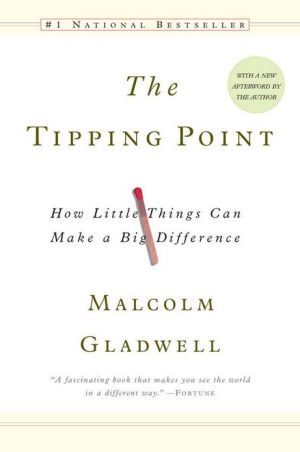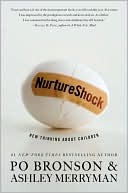People Styles at Work and Beyond: Making Bad Relationships Good and Good Relationships Better
Why is it so hard to work well with some people? People Styles at Work...and Beyond presents a comprehensive, practical, and proven method readers can use to:\ • recognize how they come across to other coworkers\ • read others’ body language and behavior to identify the best ways to work with them\ • make small adjustments that will dramatically increase the quality and productivity of their interactions\ • find common ground with different people while retaining their individuality\ • relate...
Search in google:
At work, and in other spheres of life, how well you relate with others affects your ability to get things done. What you may not realize is that all people exhibit one of several different behavioral "styles," which determine how they think, make decisions, communicate, manage time and stress, and deal with conflict. By understanding which "people style" you're dealing with, you can establish rapport with someone more easily, become more persuasive, and avoid miscommunication and the possibility of rubbing someone the wrong way.People Styles at Work ... And Beyond reveals the strengths and weaknesses of each style, includes a self-assessment for determining which style you are, and presents a proven approach you can use to:Identify the best ways to work with others based on their body language and behavior • recognize how you come across to coworkers • make small adjustments that will dramatically increase the quality and productivity of your interactions • find common ground with different people • relate less defensively and more effectively-no matter how others actNow including all new material on personal relationships, parenting, and more, this is the ultimate guide that has helped hundreds of thousands of people make even their most difficult relationships much more productive and pleasant.
INTRODUCTION\ BOTH AT WORK and at home, success and happiness depend on relating\ to others across a chasm of significant differences. If you could figure out\ how to bridge the gap between yourself and others, you could make your\ life—and theirs—much easier, happier, and more productive. How to do\ that is what this book is about.\ The differences between people are a major source of friction. For example,\ our friend Michelle does everything in a rush. She walks fast,\ talks fast, decides fast. And she completes projects in a flurry. As luck\ would have it, she’s often teamed with John, who is very deliberate.\ John walks slowly, talks slowly, decides slowly. Although these differences\ may not seem like a big deal, if they’re not managed well they’re\ likely to erode Michelle’s and John’s working relationship. You’ve undoubtedly\ seen how differences like these can undermine cooperation,\ hamper performance, and add considerable stress to people’s lives.\ This book shows how you can manage those kinds of differences in\ ways that enhance your relationships, increase your productivity, and add\ richness and spice to your life. It’s about making people differences work\ for, rather than against, you.\ There are three parts to the book:\ • Part One: Understanding Yourself and Others\ • Part Two: Style Flex: A Key to Improved Relationships\ • Part Three: People Styles and Family Relationships\ Part One: Understanding Yourself and Others provides a pragmatic\ way of understanding the differences between people. Rather than delve\ into esoteric psychological theory, it provides a straightforward, practical\ explanation of what you need to know to relate more effectively to others.\ Chapter 1 notes some of the differences between the four people styles\ and how those differences can lead to people problems. Chapter 2 describes\ the people styles model and explains how it can help you relate\ more effectively to people very different from yourself. Chapter 3 helps\ you capture data for identifying your own style. The two dimensions of\ behavior that are key to understanding yourself and others are highlighted\ in Chapter 4. With this background, Chapter 5 guides you\ through an assessment that shows how you come across to other people.\ The four people styles are described in Chapters 6 and 7. Chapter 8 depicts\ each style’s tendency toward certain strengths and weaknesses.\ Chapter 9 describes backup styles—the four dysfunctional and relationship-\ straining ways in which people of each style react to excessive stress.\ In Chapter 10, you’ll learn how to cope productively both with your own\ and with other people’s stressed-out behavior.\ Part Two: Style Flex: A Key to Improved Relationships shows how to\ create more productive interactions by applying the knowledge of yourself\ and others gained in Part One. Chapter 11 introduces you to style\ flex, a way of creating common ground with people very different from\ yourself. Style flex is the intriguing ability to be true to yourself while\ relating to someone else on that person’s wavelength. The four steps involved\ in flexing to another person’s style are presented in Chapter 12. In\ Chapter 13, you learn how to identify another person’s style. Chapter 14\ describes how to use style flex in several special situations. The final chapter\ of Part Two describes basic flex—three personal qualities that undergird\ style flex.\ Parts One and Two are equally applicable to personal and work relationships.\ However, the people styles model has some unique and beneficial\ applications to personal relationships. So Part Three: People Styles\ and Family Relationships discusses applications of the people styles model\ to two of these types of personal relationships. Chapter 16, ‘‘The Art of\ Loving Someone Very Different from Yourself,’’ shows how to forge an\ even better relationship with your domestic partner. In Chapter 17, you’ll\ find style-based parenting guidelines that will help you have more enjoyable\ relationships with your kids while helping them increase their selfesteem\ and develop their unique strengths.\ There are four appendices—one for each of the four styles. The appendix\ for your style presents specific guidelines on how to flex to persons\ of each of the four styles.\ Many of the concepts in this book will come not as news but as\ reminders. We’re often told that this way of organizing interpersonal data\ helps people sharpen insights they’ve already gained from their life experience.\ This familiarity makes it easier for readers to implement the relationship-\ enhancing methods found in these pages.\ We hope the concepts and methods presented in this book will enrich\ your life and relationships as much as they’ve enhanced ours.
Introduction 1Part 1 Understanding Yourself and Others1 No Wonder We Have People Problems 72 People Are More Predictable than You Might Think 163 What's Your Style? 244 Two Keys to Understanding People 285 See Yourself as Others See You 386 The Driving Style and the Expressive Style 437 The Amiable Style and the Analytical Style 548 Make the Most of Your Gifts 639 Backup Styles: Extreme, Inappropriate, and Inflexible Behavior 7210 Coping with Backup Behavior 82Part 2 Style Flex: A Key to Improved Relationships11 The Style Flex Solution to People Differences 9112 Four Steps to Better Relationships 9913 How to Identify Someone's Style 10714 Flexing in Special Situations 11715 Three Keys to Good Relationships 127Part 3 People Styles and Family Relationships16 The Art of Loving Someone Very Different from Yourself 13717 Style-Based Parenting 147AppendicesI For Amiables Only: How to Flex to Each Style 155II For Drivers Only: How to Flex to Each Style 169III For Expressives Only: How to Flex to Each Style 187IV For Analyticals Only: How to Flex to Each Style 202Bibliography 219Index 225








